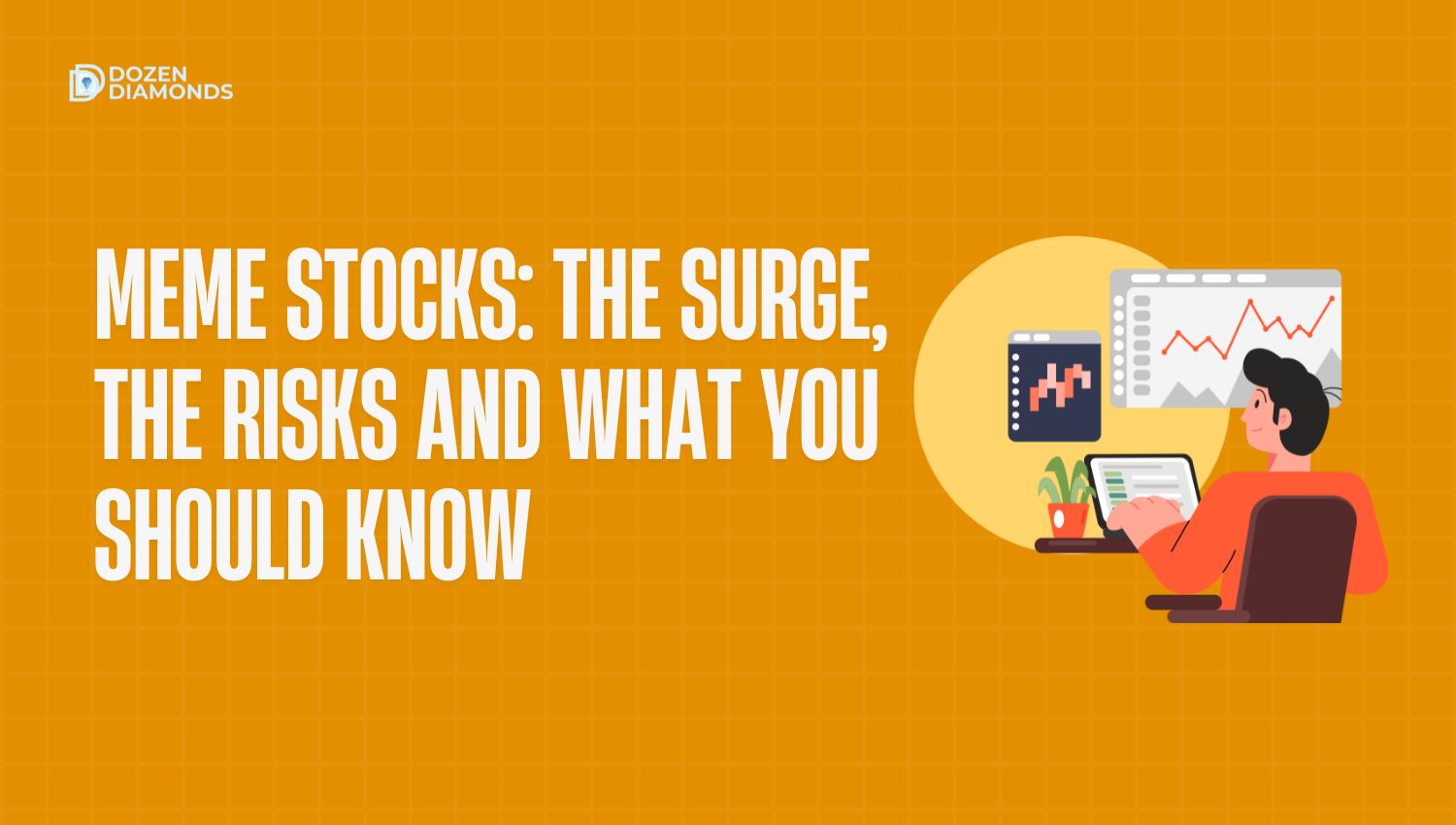Meme Stocks: The Surge, the Risks & What You Should Know

Table of Contents
Introduction
After reading this article, you’ll understand exactly how meme stocks form, how to identify them, and whether you should participate or avoid them.
These insights are backed by historical case studies (like GME and AMC) and data showing extreme returns and crashes in meme stocks.
You’ll walk away with:
- A clear framework to distinguish hype vs solid setups
- Risk-management rules before entering meme trades
- A “participation checklist” to make smarter decisions
What Are Meme Stocks?
“Meme stocks” are shares of companies whose prices and trading volumes are driven heavily by social media narratives, internet communities, and the desire to ride viral momentum — often irrespective of fundamentals. Investopedia
They differ from regular stocks because their primary “fuel” is sentiment and collective attention, not earnings growth or strong business fundamentals.
Characteristics often seen:
- Sudden spikes in volume and price with little corporate news
- High short interest (making them vulnerable to short squeezes) TradingSim
- Wild volatility, both upward and downward
Why They Emerge: Psychology & Social Media
- FOMO & herd instinct: Retail traders see others making gains and fear of missing out.
- Narrative power: A catchy story (underdog, turnaround, short squeeze) spreads fast.
- Community and identity: Forums (like Reddit’s r/wallstreetbets) create belonging and “us vs them” energy Wikipedia
- Algorithmic amplification: Trending posts, notifications, viral loops push even more attention.
Key Mechanics Behind Meme Stocks
3.1 Short Squeeze Dynamics
Many meme stocks have heavy short interest. When price starts rising, short sellers rush to cover, pushing price even higher. (MOASS — Mother of All Short Squeezes — is a popular meme-community concept) Wikipedia
3.2 Volume & Liquidity Shock
Suddenly, many retail investors pile in, sending volume skyrocketing. That gives momentum traders signals, which attract more buyers. TradingSim
3.3 Feedback Loop with Social Media
As price rises, social media users post charts, memes, “look what’s happening” threads. That invites more eyeballs and money, reinforcing the trend. TradingSim
Case Studies: GME, AMC & Recent Revival
- GameStop (GME): The poster child of meme stocks. During 2021, retail communities on Reddit triggered a short squeeze that sent the stock from ~$17 to >$500 at its peak. Investopedia
- AMC Entertainment: Riding a similar wave, AMC saw huge swings, with retail traders supporting the stock to punish short sellers. Schwab
- Recent Revival (2025): Stocks like Krispy Kreme, GoPro, Beyond Meat have seen renewed meme-style surges driven more by social buzz than fundamental turnaround news. Empower
These examples show how rapid gains are possible — but so are steep reversals.
The Information Gap: Algorithmic Amplifiers & Retail Clustering
Many existing articles talk about hype or psychology, but few focus on:
- Algorithmic trend boosters: platforms that surface trending stock chatter, auto-alerts, “stocks you should look at” lists
- Retail clustering behavior: how a few influencers or users coordinate timing
- Network effects not just in forums, but via cross-platform signals (Reddit → Twitter → TikTok → Discord)
Including these helps you see why some meme stocks go bigger and some fade early.
Risks & Common Pitfalls
- Crash risk: Gains can evaporate quickly when hype fades
- Illiquidity: In downturns, exits may be hard
- Overpaying: You may enter after most move is done
- Psychological distress: Regret, panic selling, chasing losses
- Regulatory or platform bans: Sudden halts, trading restrictions
Charles Schwab cautions that in meme names, “trades often reverse just as swiftly.” Schwab Brokerage
Smart Strategies (If You Want to Participate)
- Allocate only a small “speculative” pool (e.g. 5% of your capital)
- Define entry and exit criteria in advance (volume, breakout, short interest)
- Use stop losses or trailing exits
- Monitor sentiment closely — memes die fast
- Use short time horizons (days–weeks) rather than buy-and-hold
Checklist: When to Join / When to Avoid
| No. | Condition | Action | Why |
|---|---|---|---|
| 1 | Rising short interest + volume | Possible opportunity | Indicates squeeze potential |
| 2 | Consistent hype across platforms (Reddit, TikTok, Twitter) | Watch more closely | Suggests momentum |
| 3 | Fundamental weakness, poor earnings | Avoid / only small exposure | Risk is higher |
| 4 | Price already run too much without pullback | Beware | You may be late |
| 5 | Weak exit volume | Don’t enter | Could trap you in illiquid position |
Final Thoughts
Meme stocks represent one of the most extreme meeting points of social media, psychology, and market dynamics. They can deliver sensational returns — but only for those who act carefully, managing risk and understanding when hype is fading.
Remember: the noise is loud, but the disciplined signal is in your plan.
Next-Step: Your Action
Download the Kosh App to experience automated stressless prediction- less stock trading strategy- The Stressless Trading Method